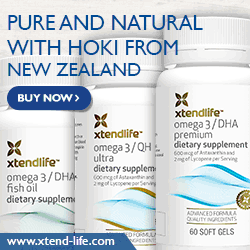Stacking the Deck
As a former university researcher, I’m quite familiar with how studies are conducted…I’ve been involved in a few of ’em myself. So naturally, when I evaluate supplement claims, one of the first places I look is in the peer-reviewed, published literature. A claim is more likely to be true, if it’s been independently tested, and the results assessed by other experts in the field.
Unfortunately, even the published literature needs to be read carefully, as it’s possible to design a study to favor the conclusion you want to draw. One need not fabricate data, nor do anything explicitly dishonest: all it takes is the right conditions.
I have a perfect example right at hand: a fat loss study using a designer whey protein product, Prolibra™. Prolibra is made by the Glanbia Corporation, which markets a wide variety of high quality dairy proteins throughout the world.
The study is pretty straightforward. The researchers recruited 158 overweight men and women, and put them on a modest weight loss diet, based on American Heart Asscociation dietary guidelines. The subjects were also instructed to restrict dairy consumption to < 1 serving per day and total calcium intake to less than 500 mg/day. The subjects in the test group were given two packets of chocolate-flavored Prolibra, containing 10 g of protein each; the control group got an isocaloric powder composed of maltodextrin. They were instructed to consume the packets 20 minutes before breakfast and dinner.
With me so far? Ok, so both groups lost weight, but the Prolibra group not only lost more weight and fat than the controls, they also retained more lean body mass.
Good deal, huh? Looks like supplementing with Prolibra might be a good way to shed a little extra fat – right?
Perhaps…but was it a fair test? If you take a closer look, it’s clear that the study conditions were chosen to give Prolibra an advantage. As noted above, both dairy products (which would be an additional source of whey proteins) and calcium were restricted; and total, dietary protein was kept to 15% of total calories. The subjects consumed an average of 1700 calories, so that works out to only 63 g protein. This means the additional 20 g of protein from Prolibra represented a significant increase.
So, is Prolibra really that special? Or would just a little more dietary protein and calcium have done the trick? Both extra protein as well as dairy calcium can provide a boost to fat loss, after all.
And – in my book – this is an important consideration. I normally buy Glanbia’s cross-flow microfiltered (CFM) whey protein isolate – which is a good source of protein and a fair source of calcium. I get it from one of my usual online bulk retailers for a little over $10 per pound. The same retailer sells Prolibra for nearly $40 per pound.
Wowsers. That’s quite a difference.
Thus, before I shell out an extra $30 for a pound of Prolibra, I’d like to know how it stacks up against the CFM I usually buy! The study tells me that using Prolibra is better than using nothing (or maltodextrin), but it doesn’t tell me if a comparable source of protein – like my (much cheaper) CFM – will do the job just as well.
See what I mean about “stacking the deck?”
Now this is not to knock Glanbia – heck, I’m a customer. At the same time, it pays to understand how studies can be designed to create the best possible impression…especially when there’s that much extra $$$ on the table.



